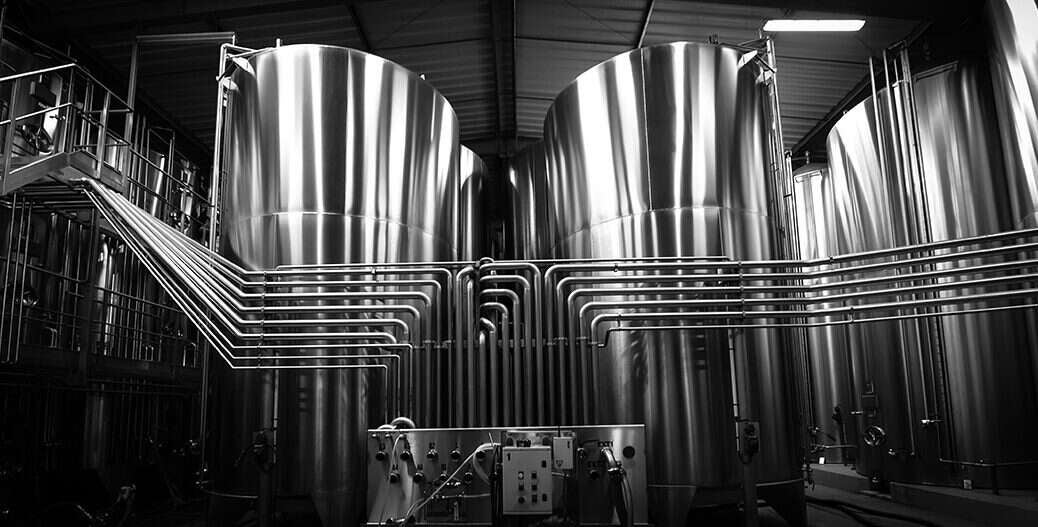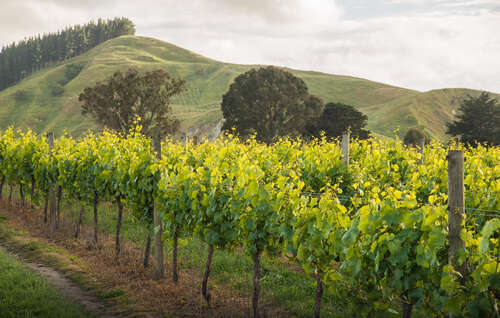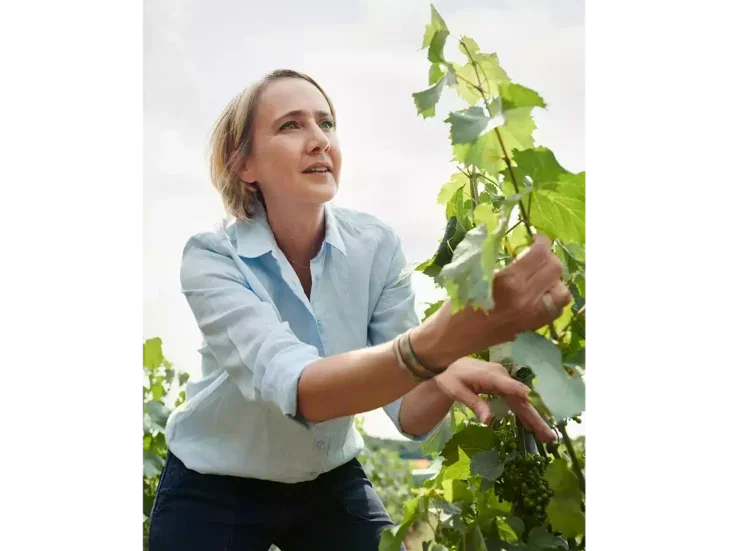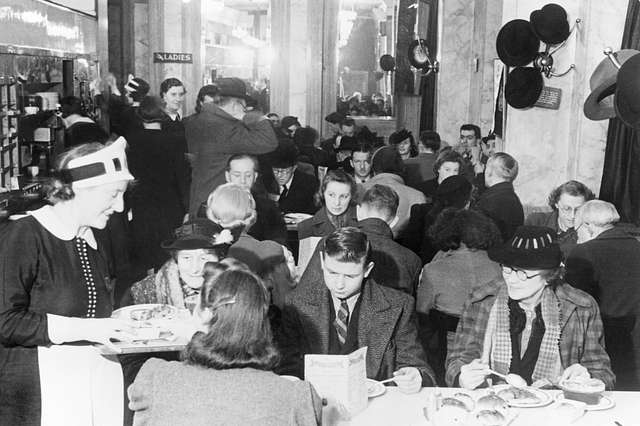
Benjamin Lewin MW attempts to officiate a long-running dispute between tradition and modernism in wine.
Would it be too outrageous to argue that ever since the Enlightenment of the 18th century, society has been driven by a clash between modernity and tradition? And so has wine.
The concept of a distinction between modern and ancient dates from medieval Europe. Sometimes it was used to indicate the superiority of the modern era; sometimes it was used in the opposite sense, to indicate a romantic longing for the ancient ways. The clash plays out in all aspects of society: art, music, literature, politics. Wine is especially susceptible because of the way the industry has cloaked itself in the mantle of tradition.
In the first part of the 20th century, new cultural movements were considered to define modernity. By the end of the century, science became the marker for modernity, often making it the target for those who objected to modern life. “Science destroys all values but its own” would be a fair summary of 20th-century criticism. But this is scarcely a tenable position in winemaking, where science is all that stands between wine and vinegar.
Indeed, science is at the forefront of modernism in winemaking. It is seen most overtly in winemaking techniques: using indigenous yeast versus cultured yeast at fermentation, chaptalizing or acidifying, giving impressions of oak by means other than aging in barriques, or making many of the other “adjustments” that are now possible. More recently, viticulture has become increasingly scientific, with much better understanding of how to adjust the canopy to suit climatic conditions. One area where modernism has been firmly resisted is the refusal to allow irrigation in Europe—whereas in the New World, there can be detailed control of irrigation to produce exact degrees of water stress.
The argument between the traditionalists and modernists in winemaking is usually presented not in the lofty philosophical terms of the debate in the arts but more in terms of preserving traditional style versus the potential of new techniques. Its most visible sign is in the debate about new oak versus used. This was certainly the case in Barolo, where new oak was anathema to traditionalists because it was felt to destroy the flavor profile of Nebbiolo but was adopted by modernists because it replaced tarry tannins (and, often enough, flawed wines) with sweeter flavors.
Today, the division between the two schools is more pragmatic; it is clear that the use of containers is a matter of choice, oak versus steel or concrete for fermentation, new oak versus old oak for aging, small containers such as barriques versus large containers such as vats for aging—every stage of winemaking can be adjusted to maintain or modify a style. Indeed, in Barolo, where the clash was the most overt, producers now regard the very concept of a distinction between modernism and tradition as old hat.
The wine industry has done a remarkable job of presenting itself as traditional while actually modernizing, at least for large brands, which give an impression that they are using the hallowed winemaking procedures of top wines, while in reality production is more akin to an industrial process. The tanks of the production facility for a major wine brand have an appearance more in common with an oil refinery than with cramped cellars lined with barriques. Inserting oak staves or even sprinkling oak dust into wine mimics the effects of those oak barriques without abandoning the industrial approach.
Every era has claimed the modernism of the previous era as its own tradition. In the ancient world, wine was stored in amphorae. Wood barrels were introduced for transport and storage in the 3rd century; they became the tradition for several centuries. New oak was a novelty when it became dominant after World War II; today it is a norm in top wines. Concrete was commonly used for fermentation vats until stainless steel became popular; now many producers are going back to concrete. Some producers are even replacing barriques with amphorae. Tradition is a malleable concept.
I remember a dinner some years ago (before climate change had set in) with a producer from Burgundy, who had best be nameless. “How has winemaking changed since you took over the domaine?” I asked. He replied, “I make wine just like my father did and just like my grandfather did. Nothing has changed!” Yet in the period of two generations, his domain (like others) had gone from occasionally producing great wine and quite often producing thin, acid wines to regularly producing very good wines. This had not been achieved by nostalgia. Claiming tradition can be more of a marketing ploy than the reality of winemaking.
Modernism, tradition, and the climate-change challenge
Modernism has its successes and its failures. I suspect most people would agree that modernism has had its greatest successes in regions where the match of grape varieties to climate went beyond marginal and has been rescued by climate change. Sancerre is an example where the style has gone from herbaceous and grassy, acid and thin, to riper and rounder, hopefully stopping short of exotic, largely as the result of warmer summers. I suspect the premox problem of white Burgundy was caused more than anything else by the modern trend to using lower levels of sulfur dioxide at bottling; tradition in the form of high levels of sulfur dioxide might have averted the problem.
But the era of climate change offers a challenge to tradition deeper than anything before it. It is scarcely possible to maintain that a wine holds to a traditional style when its alcohol level has jumped from 12% to 14% and when fruit levels, extraction, and tannins have all increased in parallel to keep balance. Everything now has to be questioned.
Perhaps the first question is, What really is tradition? Take Bordeaux. Is tradition the dominance of Cabernet Sauvignon on the Left Bank and Merlot on the Right Bank? Well, if so, it is a recent tradition, to introduce an oxymoron. The fabled 1855 Classification was based on wines made before Cabernet Sauvignon became the dominant grape. Merlot became dominant on the Right Bank only following the infestation by phylloxera.
Looking at the 19th century, we might ask how grape varieties changed in response to climate. Carmenère and Malbec fell out of favor because of difficulties achieving ripeness, with the coup de grâce coming from the fact that they did not take well to grafting after phylloxera struck. Because the local grapes could not ripen sufficiently, wines were strengthened by adding lots from the northern Rhône. In the middle of the century, in fact, Bordeaux châteaux actually controlled vineyards in the northern Rhône to assure their supply of grapes. This was stopped, of course, by the introduction of the AOC system in the 20th century.
Taking a broader view than just defining tradition by grape varieties, the persistent quality of Bordeaux until the present century was a character of freshness coming through a wine with moderate alcohol, a character tending to turn savory as it aged, and, as often as not, a touch of herbaceousness in the background. Bordeaux today is much richer (and more alcoholic), to the point at which a vintage resembling its historic character is called “classic,” which is in effect a euphemism meaning it’s not rich in the modern style.
Do we want to return to tradition, and how might we do that? One way would be to bring back the grape varieties that were abandoned in the 19th century because of their failure to ripen well. Those châteaux in Bordeaux that have reintroduced Carmenère or Malbec might be thinking along those lines.
Varying varieties
Is it heresy to take the argument further, to ask whether the increased ripeness of grapes in Bordeaux today means that this tradition might be better maintained by other grape varieties than those presently allowed? Going back to the abandoned tradition of importing grapes from other regions, what would happen if those southern varieties that were used to strengthen the wine were planted directly in more northerly regions?
Introducing Syrah directly into Bordeaux could rescue the tradition of “Hermitaging” the wines. In the same period, Burgundy was often strengthened by Grenache from the southern Rhône; would growing Grenache in Burgundy restore that tradition? (This would be a neat reversal of the effect of some recent hot vintages, when Pinot Noir in Burgundy has achieved a level of alcohol and richness reminiscent of Châteauneuf-du-Pape.) Given climate change, temperatures in the northern appellations today may be quite close to those in the more southern areas two centuries ago. So, Syrah grown in Bordeaux today, or Grenache grown in Burgundy, might be quite close in character to the wines that were historically imported from the south.
Before the AOP system was introduced, growers were free to adapt to changing conditions. In terms of the 19th century, Grenache was not a traditional grape in Châteauneuf-du-Pape. In fact, when it was introduced into Châteauneuf from Spain, there were warnings that it would ruin the traditional style of Châteauneuf. Have the restrictions of the AOP system stultified the system? Should we think beyond those restrictions to the historic tradition of growing grape varieties at the northern limits for their ripening?
Perhaps the way to return to that tradition would be to match grape varieties with regions on the basis of what alcohol level is achieved in the average harvest. Going back to aiming for a traditional level of alcohol (without the adjustment of chaptalization) might do more to restore the old style than trying to adjust grape varieties. The criterion could be that 12.5% ABV marks an appropriate choice of grape varieties, 13–13.5% is an issue for concern, and 14% means that the match is (no longer) appropriate.
To put this in a practical light, with white Burgundy now at 14% in the 2019 and 2020 vintages, it is reasonable to ask whether it is tenable for Chardonnay to be the variety of choice. And it requires a very talented winemaker to keep the delicacy of Pinot Noir at 14% ABV. If brutality replaces delicacy, have we lost the typicity of Burgundy?
This leads me to wonder whether the extra levels of richness and alcohol that have resulted from climate change could be compensated by moving each grape variety farther north. Syrah could replace Cabernet Sauvignon or Merlot in Bordeaux, where Merlot may present the most urgent problem, as it becomes scarcely tenable as a variety if alcohol levels routinely push over 15%. Syrah could also replace Gamay in Beaujolais, especially in the areas where the terroir is the granite that is supposed to be a perfect match with the variety. Grenache could replace Pinot Noir in Burgundy, Chardonnay could take over from the whites of the Loire or Alsace. It all depends whether you take a superficial view of tradition in terms of grape variety or a deeper view in terms of the overall character of the wine.
In the centuries that preceded climate change, it was possible to make incremental changes in viticulture or vinification and pretend nothing was happening to the style of the wine. As the result of climate change, a much larger shift may be required to return to the tradition of growing grapes under limiting conditions. Perhaps modernism is the only way to save tradition.






